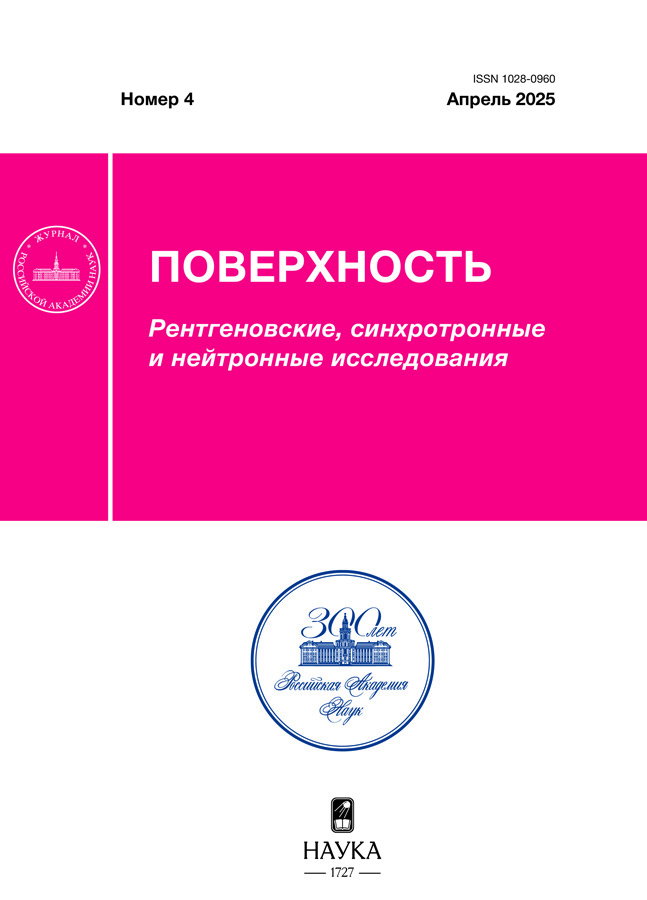On optimal conditions for generation of terahertz surface plasmon-polaritons by the end-fire coupling technique
- Authors: Nikitin P.А.1, Gerasimov V.V.2,3, Lemzyakov A.G.3,4
-
Affiliations:
- Scientific and Technological Centre of Unique Instrumentation RAS
- Novosibirsk State University
- Budker Institute of Nuclear Physics SB RAS
- Shared Research Center “Siberian Ring Photon Source”, Boreskov Institute of Catalysis SB RAS
- Issue: No 4 (2025)
- Pages: 83-88
- Section: Articles
- URL: https://ter-arkhiv.ru/1028-0960/article/view/689197
- DOI: https://doi.org/10.31857/S1028096025040127
- EDN: https://elibrary.ru/FCRHLQ
- ID: 689197
Cite item
Abstract
The results of an experimental study of the generation of surface plasmon-polaritons in the terahertz range are presented. The end-fire coupling technique has been used for generation, when the beam is focused on the metal–dielectric interface. It has been found that at normal beam incidence, the efficiency of plasmon-polaritons generation is maximum, and the half-width of the dependence of the generation efficiency on the angle of radiation incidence in the sample plane is 6.0° ± 0.5°. It is shown that the generation efficiency has a maximum at a certain shift of the center of the incident beam relative to the metal–dielectric interface. The half-width of this maximum is 590 ± 50 μm, which is consistent with theory within the error limits.
Full Text
About the authors
P. А. Nikitin
Scientific and Technological Centre of Unique Instrumentation RAS
Author for correspondence.
Email: nikitin.pavel.a@gmail.com
Russian Federation, Moscow
V. V. Gerasimov
Novosibirsk State University; Budker Institute of Nuclear Physics SB RAS
Email: v.v.gerasimov3@gmail.com
Russian Federation, Novosibirsk; Novosibirsk
A. G. Lemzyakov
Budker Institute of Nuclear Physics SB RAS; Shared Research Center “Siberian Ring Photon Source”, Boreskov Institute of Catalysis SB RAS
Email: nikitin.pavel.a@gmail.com
Russian Federation, Novosibirsk; Novosibirsk
References
- Maier S.A. Plasmonics: Fundamentals and Applications. New York: Springer, 2007. 224 p. https://doi.org/10.1007/0-387-37825-1
- Liang Y., Koshelev K., Zhang F., Lin H., Lin S., Wu J., Jia B., Kivshar Y. // Nano Lett. 2020. V. 20. № 9. P. 6351. https://doi.org/10.1021/acs.nanolett.0c01752
- Peale R.E., Figueiredo P.N., Phelps J.R., Chan K.C., Abdolvand R., Smith E.M., Vangala S. // Infrared Phys. Tech. 2022. V. 125. P. 104253. https://doi.org/10.1016/j.infrared.2022.104253
- Gallerano G.P., Biedron S. // Proc. of the 2004 FEL Conf. 2004. P. 216. https://accelconf.web.cern.ch/f04/papers/FRBIS02/FRBIS02.PDF
- Lewis R.A. // J. Phys. D. 2019. V. 52. № 43. P. 433001. https://doi.org/10.1088/1361-6463/ab31d5
- Zhang X., Xu Q., Xia L., Li Y., Gu J., Tian Z., Ouyang C., Han J., Zhang W. // Adv. Photon. 2020. V. 2. № 1. P. 014001. https://doi.org/10.1117/1.AP.2.1.014001
- Begley D.L., Alexander R.W., Ward C.A., Miller R., Bell R.J. // Surf. Sci. 1979. V. 81. № 2. P. 245. https://doi.org/10.1016/0039-6028(79)90515-6
- Suarez I., Ferrando A., Marques-Hueso J., Diez A., Abargues R., Rodriguez-Canto P., Martinez-Pastor J. // Nanophotonics. 2017. V. 6. № 5. P. 1109. https://doi.org/10.1515/nanoph-2016-0166
- Koteles E.S., McNeill W.H. // Int. J. Infrared Millim. Waves. 1981. V. 2. P. 361. https://doi.org/10.1007/BF01007040
- Steijn K.W., Seymour R.J., Stegeman G.I. // Appl. Phys. Lett. 1986. V. 49. P. 1151. https://doi.org/10.1063/1.97450
- Huang W., Yang W., Yin Sh., Zhang W. // Results Phys. 2021. V. 31. P. 104985. https://doi.org/10.1016/j.rinp.2021.104985
- Korobko D.A., Zolotovskii I.O., Moiseev S.G., Kadochkin A.S., Svetukhin V.V. // J. Opt. 2021. V. 24. № 1. P. 015002. https://doi.org/10.1088/2040-8986/ac3c4f
- Ebadi S.M., Ortegren J. // OSA Advanced Photonics Congress (AP) 2020 (IPR, NP, NOMA, Networks, PVLED, PSC, SPPCom, SOF). 2020. P. NoTh3C.5. https://doi.org/10.1364/NOMA.2020.NoTh3C.5
- Sun W., He Q., Sun S., Zhou L. // Light Sci. Appl. 2016. V. 5. P. e16003. https://doi.org/10.1038/lsa.2016.3
- Mackay T.G., Faryad M. // Plasmonics. 2022. V. 17. P. 753. https://doi.org/10.1007/s11468-021-01568-6
- Vinogradov A.P., Dorofeenko A.V., Pukhov A.A., Lisyansky A.A. // Phys. Rev. B. 2018. V. 97. № 23. P. 235407. https://doi.org/10.1103/PhysRevB.97.235407
- Martl M., Darmo J., Unterrainer K., Gornik E. // J. Opt. Soc. Am. B. 2009 V. 26. № 3. P. 554. https://doi.org/10.1364/JOSAB.26.000554
- Farhat M., Guenneau S., Bagci H. // Phys. Rev. Lett. 2013. V. 111. № 23. P. 237404. https://doi.org/10.1103/PhysRevLett.111.237404
- Stegeman G.I., Wallis R.F., Maradudin A.A. // Opt. Lett. 1983. V. 8. № 7. P. 386. https://doi.org/10.1364/OL.8.000386
- Gerasimov V.V., Nikitin A.K., Lemzyakov A.G., Azarov I.A. // Photonics. 2023. V. 10. № 8. P. 917. https://doi.org/10.3390/photonics10080917
- Gerasimov V.V., Nikitin A.K., Lemzyakov A.G., Azarov I.A. Kotelnikov I.A. // Appl. Sci. 2023. V. 13. № 13. P. 7898. https://doi.org/10.3390/app13137898
- Gerasimov V.V., Knyazev B.A., Lemzyakov A.G., Nikitin A.K., Zhizhin G.N. // J. Opt. Soc. Am. B. 2016. V. 33. № 11. P. 2196. https://doi.org/10.1364/JOSAB.33.002196
- Kukotenko V.D., Gerasimov V.V. // Proc. SPIE. 2023. V. 12776. Р. 1277607. https://doi.org/10.1117/12.2687472
- Handbook of Optical Constants of Solids. Vol. 1. / Ed. Palik E.D. Cambridge, MA, USA: Academic Press, 2016. 824 p.
Supplementary files















